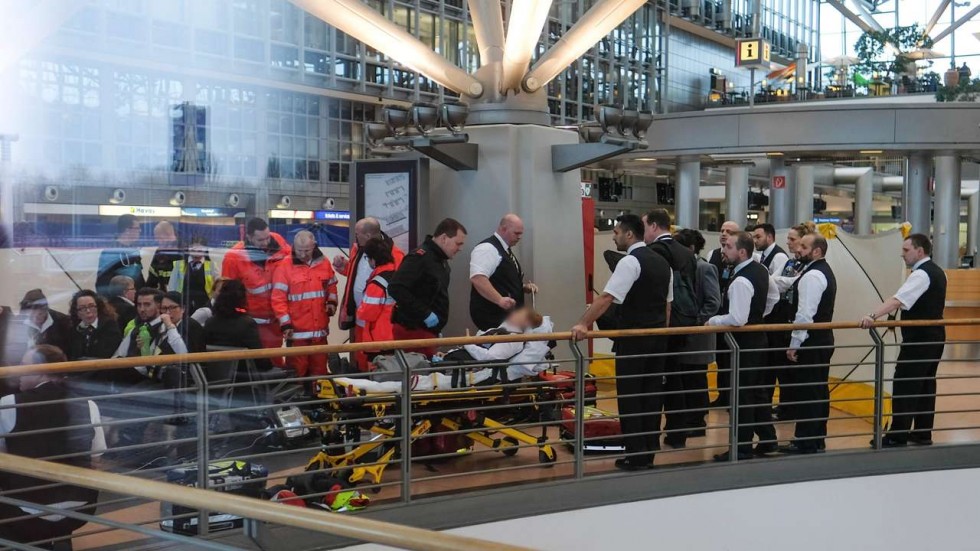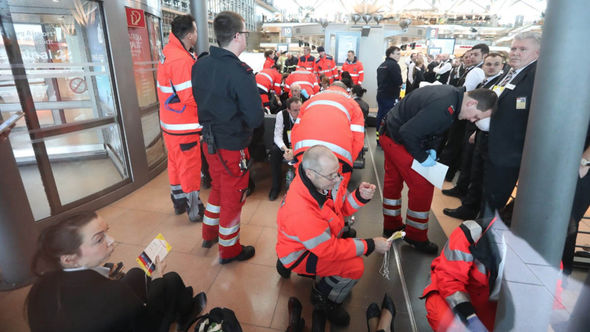Facts we know from reading article. Apparently some type of airborne hazards created S/S nausea, breathing difficulties and eye irritation. I don’t worry about nausea as many people can get queasy at the drop of a hat. On the other hand eye irritation and breathing difficulties tell me there is an airborne hazard until proven otherwise. Your eye is a fantastic low level detector and will send a warning signal to your brain to itch your eye. That’s your clue to seek fresh air now. Inhalatory threats are always of greatest risk for dosing someone due to the surface area of a tennis court provided by your aveoli.
One person complaining is a normal call, two people complaining means increase your index of suspicion and three people means it is a hazmat until proven otherwise. Now back to the photo and what my advise would have been.
- Get everyone to fresh air. I know it’s cold outside but I have to assume if the hazard did not originate in the HVAC system it will be taken up in it as the building continues to “breath” and move throughout the structure.
- I’m not too worried about PPE particularly if I get them to fresh air and I have the wind at my back. It’s doubtful anyone has liquid contamination on them or a high enough vapor concentration to be trapped in their clothing that it would impact me upwind of them outside. I would be wearing gloves as a normal practice just in case.
- The photo depicts triage activities taking place indoors, no PPE and no gloves. I’m betting they get away with it this time due to this being just an oops event with cleaning chemicals. On the other hand if 3-4 of these patients had been placed in the back of a warm ambulance for this triage to take place, the responder may have been slightly dosed by some off gassing.
Lesson we should learn but probably won’t. Hopefully this was an oops and not a test run. In either case we better figure out that accidental chemical cocktails regularly send people to the hospital. It is very low tech and this event suggests to me that billions of high tech toys and thousands of trained security staff and responders could be easily tripped up. I have no doubt I’ll be getting a number of requests for one of my CBRNE courses after the next intentional event. I wonder if anyone will be proactive enough to seek education before.
Looking forward to hearing your comments.





I see a recipe for further disaster in what I am seeing in these photos and obviously they need to address there response protocols and learned a good lesson here. I agree open air even in cold is safer than an airport concourse. Gases are most effective in closed environment and their LD50 drops quickly with concentration and time. Public buildings HVAC systems are truly poor disepation units and unreliable in performance which is both a positive and negative factor ..all response protocols have to consider Scene Safety, containment,treatment, disposition every transportation center,public center and popular venue should have its own internal response protocols that hopefully blend with the Locol community response. ..as we continue to observe overseas some places are much more prepared than others…..I agree with the gloves and I would add respirator as well with unknown inhaled .